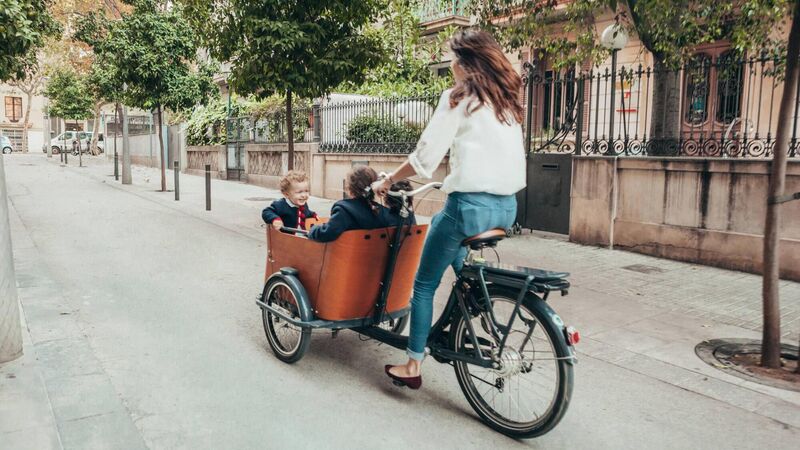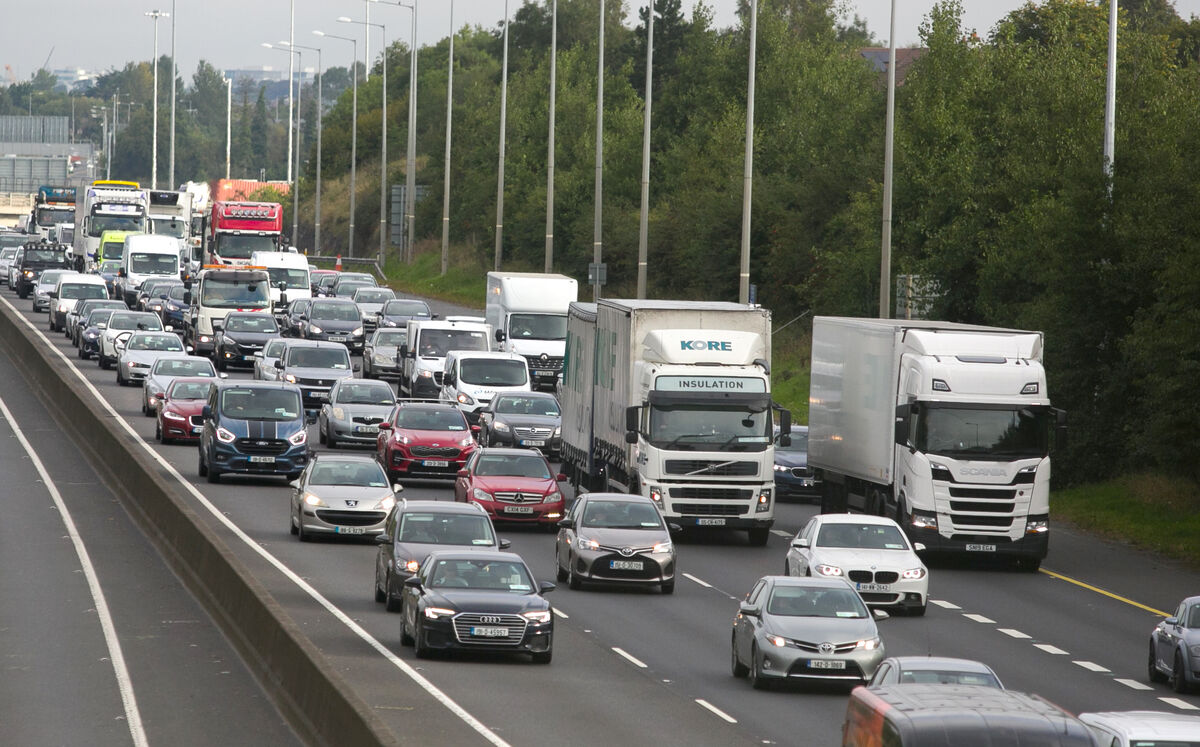Catherine Conlon: The case for the cargo bike

Cargo bikes have become popular in recent years for shopping, commuting to work and bringing children to school. Picture: iStock
Families are being encouraged to buy cargo bikes with a new €3,000 incentive that is contained in the Finance Bill. This is twice the incentive for e-bikes (€1,500) and more than the €1,250 incentive for bicycles available under the Bike to Work scheme.
Typically, a cargo bike retails at between €2,800 and €8,000. Under the scheme, consumers can buy a bike from before-tax income, effectively making savings of up to 41% for those on the higher rate of tax.
Transport Minister Eamon Ryan said the scheme would make cargo bikes more affordable for those using it as an alternative to a second car. He said cargo bikes have become popular in recent years for shopping, commuting to work and bringing children to school as well as for work purposes as delivery vehicles.
"The cost factor, however, is an impediment to many people who want to buy one. We hope that by increasing the limits for cargo bikes, more people will be able to choose them as a more sustainable way to get around."
CLIMATE & SUSTAINABILITY HUB
Further incentives include rolling out a ‘bicycle library’ in schools to trial the cargo bike as well as incentivising delivery companies to invest in cargo bikes.
The initiative was welcomed by cycling advocates with reservations around the delivery mode, suggesting incentives should be made available to the self-employed. Lower-income families would potentially benefit more from interest free loans to buy cargo bikes.
Cargo bikes are not just cleaner and cheaper — they are also faster than delivery vans, a recent study reported. Electric cargo bikes deliver about 60% faster than vans in city centres, they have a higher average speed and dropped off 10 parcels an hour compared with six for vans.
The bikes cut carbon emissions by 90% compared with diesel vans and by a third compared with electric vans. Air pollution was also significantly reduced.
Home deliveries have soared in recent years with online sales boosted by the Covid pandemic. Vans travel faster along clear roads but slower along congested streets and can be delayed in the search for parking. Cargo bikes can bypass traffic jams, take shortcuts through streets closed to through-traffic and ride to the customer’s door.
Between 1990 and 2021, transport showed the greatest overall increase of greenhouse gas emissions, with road transport increased by 115% according to EPA figures.
Fuel combustion emissions accounted for 9% of greenhouse gas emissions in 1990 but had almost doubled (18%) by 2021. Passenger cars increased by 178% and commercial vehicles by 167%. Cargo bikes replacing delivery vans can play a role in fracturing the ongoing link between emissions and economic activity.
Ersilia Verlinghier, of the Active Travel Academy at the University of Westminster and lead author of the study showing cargo bikes are faster and cleaner than vans, said evidence from Europe suggests more than half (51%) of all freight journeys in cities could be replaced by cargo bike.
"Even if just a portion of this were to happen, it would be accompanied by not only a dramatic reduction in C02 emissions, but also contribute to a reduction of risks from air pollution and road traffic accidents, whilst ensuring an efficient, fast and reliable urban freight system."
Other research has shown cargo bikes are more effective when delivery distances and parcel sizes are small.
What about cargo bikes for other uses — like shopping, commuting to work and bringing the kids to school?

One factor to consider is the long-standing love affair between men and their cars. As cities look to reduce air pollution and hit net-zero targets, many are investing millions in green mobility infrastructure. A total of 340 sustainable transport projects in 19 local authorities in Ireland received over €70m in 2021.
These measures will only work if cities can get the public on board and experts warn that local authorities are overlooking a major factor — the role that gender plays in how people move around.
According to Swedish research (2020) while men and women make about the same number of trips every day, men travel longer distances and favour their cars. Women tend to make more stops on their journeys — to combine family, work, and social responsibilities – and are more likely to choose alternatives to cars when they become available.
Intuitively we know this to be true. Who stops for milk or something for dinner on the way home before picking up the kids from creche, and dropping them to swimming or football? The study suggested that if men travelled like women, Sweden’s emissions from passenger transport would decrease by nearly 20%.
It is not just Swedish men who favour cars over public transport and active travel. A 2019 Eurobarometer survey commissioned by the European Parliament found while the car was the preferred mobility option regardless of gender, women were more likely than men to walk or use public transport.
How can the culture be changed so that all of us, men and women, opt for sustainable mobility transport options? Cars have long been a symbol of status, wealth and independence as well as bound up in ideas of masculinity. Watch any James Bond movie. Cars are not just a rational choice — there are a lot of emotions bound caught up in choosing a car.
When Swedish researchers asked commuters why they travelled to work by car — many said public transport was too awkward. But many said they were unlikely to use it if it was available. "Some people in the interview said ‘Oh, you don’t go by bus. You just don’t, as a man'," said Anna Gemzell, development strategist for the municipality.
Rather than pump more money into new infrastructure and hope people would use it, the Swedish city of Umea set out to actively incentivise car users to make the switch.
It partnered with local employers to offer perks to employees who changed their commuting habits — some companies even went so far as to grant an additional week of holiday to employees who frequently cycle to work.

Brussels came to a similar conclusion and specifically targeted men in its ad campaigns to increase bike use. As part of the initiative, the local administration launched ‘BrusselsFit,’ a campaign that touts cycling to get fit and rebrands the city’s cycle paths as "the largest gym in Brussels".
Its promotional video features a middle-aged employee, tired of working in soulless gyms and stuck in commuter traffic, hopping on a bike and regaining a sense of freedom.
The campaign, whose posters predominantly feature men, was aligned with major investments in sustainable mobility, including expanded bike infrastructure.
There is a message here for Mr Ryan’s financial incentives to entice more people to switch to cargo bikes as well as other modes of active travel.
Targeting the ongoing love affairs with cars, particularly among men, with additional incentives to make active travel more appealing might enhance the reach of active travel campaigns to move men and women out of their cars into cargo bikes and public transport and place the challenging climate target of halving transport emissions by 2030, within reach.
- Dr Catherine Conlon is a public health doctor in Cork and former director of human health and nutrition at Safefood
CLIMATE & SUSTAINABILITY HUB















